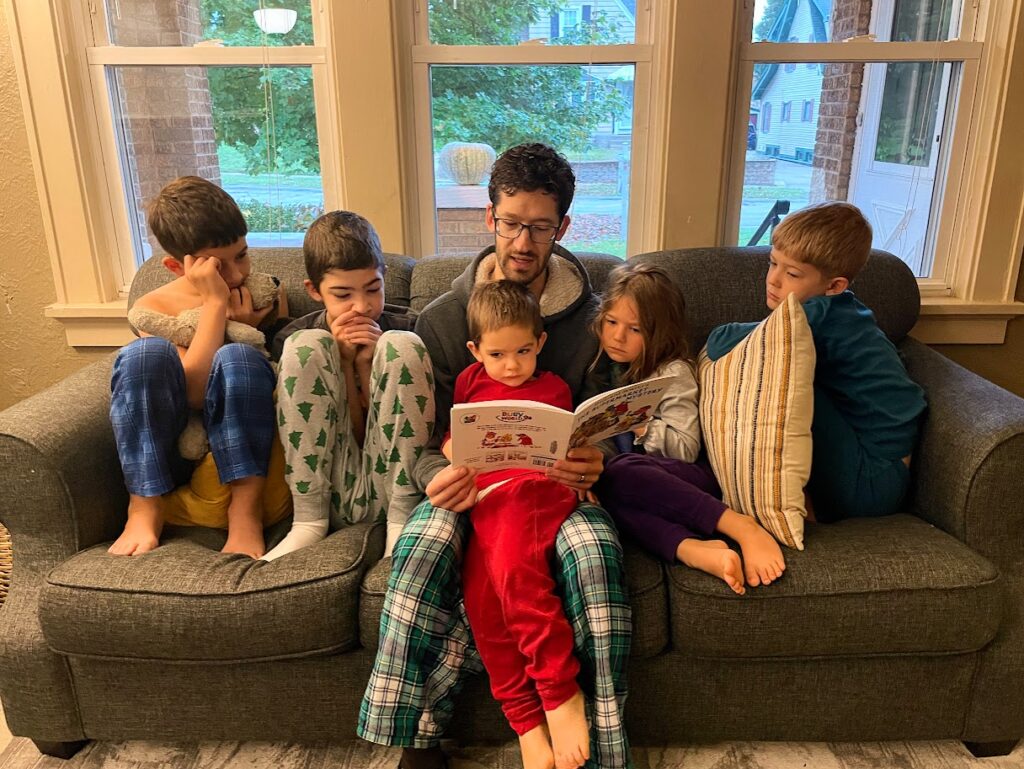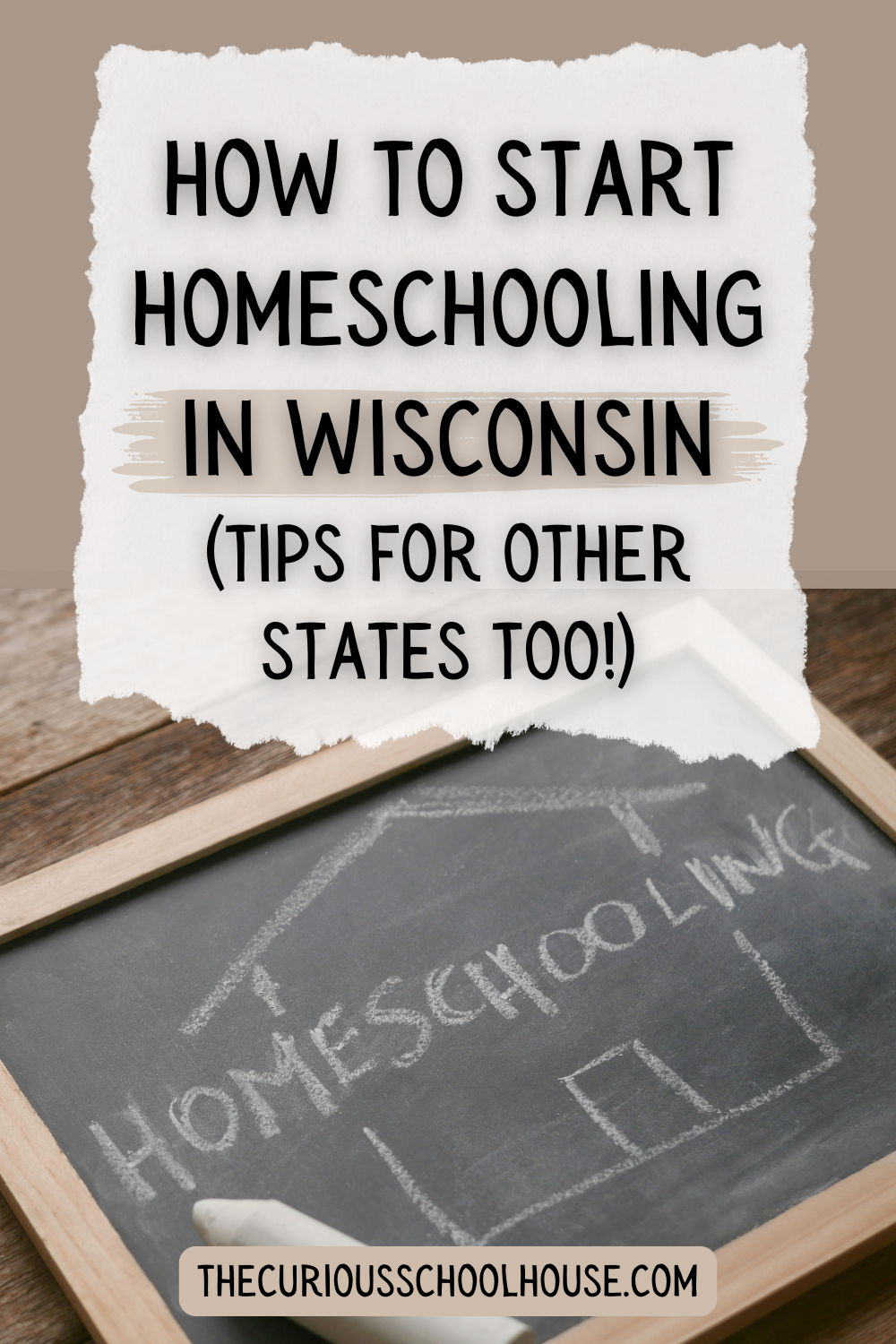How to Start Homeschooling in Wisconsin (tips for other states too!)
This blog post contains 5 simple steps to help you start homeschooling in Wisconsin, as well as some general tips for beginning homeschooling in any location! Encouragement for new homeschool moms.
Starting anything new can be intimidating. I have felt this acutely over the past couple of years, as somehow – I am not quite sure how – many new things have entered my life. One year ago we added narration in our homeschool and I wrote about how it felt so big and overwhelming at the start. A year ago I started baking sourdough bread, and the first couple of times I had to read and re-read the recipe about twenty times in order to make sure I got every step just right. It was hard!
Starting this blog was hard, and it felt so intimidating to think about blog design and writing content and SEO and monetization and keyword research and site speed and and and. I also felt this intimidation of something “new” when I started teaching a class in our homeschool co-op, when we decided to pack up and sell our house, and when we spent a week driving from Seattle to Wisconsin.
This is not to say that any of those things are bad – in fact, quite the contrary!
All this to say that if you have decided to start homeschooling, and it is brand new to you, I am proud of you for being willing to try something new! It may feel difficult at the beginning, but you will get the hang of it and it will get easier. If you need a bit of reassurance before you dive in, here are some reasons why homeschooling is easier than you might think, and here is a post with six reasons why we love homeschooling.
Today I will share with you a tiny little Homeschool Bootcamp: just the basics, five simple steps, to get you off the ground and going in the right direction! Let’s dive in.

5 Steps to Start Homeschooling in Wisconsin
Step 1: Register your child (if they are age 6 or older).
Your first stop should be hslda.org, which is a fantastic website with resources for every single state in the country – you simply click on your state and you’ll be directed to a page explaining the laws and requirements for that state. You’ll see that for Wisconsin we are required to register our children at the Department of Public Instruction website here, and there are requirements of what subjects we should be covering and how many hours of instruction each year.
However – do not be overwhelmed by these requirements, because we are not required to show proof of any of them, but merely to agree that we will do it. Personally I am certain that my children far exceed the required 875 hours of instruction, because I would count all the time we spend reading together, exploring nature together, cooking, discussing big ideas, doing house projects, and more! I am happy to give my children all of this instruction, and I am confident that we meet or exceed it each year, but I’m also thankful that I don’t need to document it.
When it comes down to it, the only actual requirement in our state is to register your child with the form on the DPI website. The rest – the number of hours and the subjects covered – we agree to do, but we are not required to prove. HSLDA’s summary for the state of Wisconsin recommends documenting these things during the high school years (probably to aid in creating a transcript and getting into college, if you go that route), but before 9th grade I wouldn’t worry about it.
Please note also that you do not need to register your child until the year that they are six years old on September 1st. And hey, let me just say here that if even the government doesn’t require formal schooling until the child turns six, please do NOT push your child into academics or stress about their reading level or any other such nonsense before the age of six!
Personally I’d recommend you don’t do these things after the age of six, either, but at least take the government’s word for it and definitely don’t do it before then.
Step 2: Read a few books to get a sense of the various homeschool philosophies.
There are as many ways to homeschool as there are individual personalities, but unless you talk extensively with older, more experienced homeschool moms or read a few books on homeschooling, you might not be aware of all your options. There’s no need to research heavily into all the details of Montessori homeschooling, the Waldorf method, Charlotte Mason education, Classical homeschooling and unschooling (unless you love researching – then help yourself!); but it is immensely helpful to at least get an overview of a few of these options, so you can see what resonates with you and your personality.
One good option for this is The Call of the Wild + Free by Ainsley Arment – this excellent book has an entire section dedicated to explaining, clearly and concisely, some of the most popular homeschooling styles and what people love about them. You can also find more fabulous homeschooling books (all of which I have personally read and loved) on my mega homeschooling/parenting booklist. Get it sent straight to your inbox at the link here!

Step 3: Choose some curriculum and/or books to use.
This can turn into a long, overwhelming process if you are not careful, and that is why I recommend in Step 2 that you try to at least get a general sense of your homeschool style by reading a book or two.
However, I will also say that my first year of homeschooling I had no idea what my personal homeschool philosophy was, and I bought a lot of curriculum that I would never use today – and I learned a lot in the process. So please do not feel that you must have a perfectly clear vision of your child’s next twelve years before you can choose a math book; yes, that vision will help you out as you grow and develop it, but part of the learning process is buying and experimenting with different types of curriculum.
Here’s an old post where I detailed my exact process for choosing curriculum, if you’d like to see that. My process today looks quite a bit different, mostly because a) we don’t use as much curriculum anymore and b) I’ve figured out which ones I like, so I spend less time searching for good options.
Step 4: Plan out a routine or schedule (as simple or detailed as you like).
You’ll want this plan to be in pencil, because you’ll almost certainly have to tweak things throughout the year, but it’s a great idea to spend some time thinking about how you want the day to flow. Here are a few questions to ask to get you started:
- Will you get up early or let the kids sleep in?
- Do you have a baby or toddler whose naps need to be factored in?
- Do you have other family members who want to be involved – perhaps Dad or Grandma?
- What subjects might be hardest for your child(ren), and would they do better working on those right away – or would they prefer easing into the day with a more enjoyable subject?
- Do you have extracurricular, church, or volunteer commitments throughout the week?
- How many different ages/grades will you be juggling, and are there some subjects where you can teach/read to all the kids together? (see how I combine our kids at this post on minimalist homeschooling)
- Are you someone who enjoys having set times for each subject, or would you rather have a loose routine and let the day unfold organically?
- How will you begin each day? Options could include a song, prayer, the pledge of allegiance, or some other meaningful tradition.
- When and how will you get a break during the day? Don’t run yourself ragged!
I will say that the more children you have, the more carefully you will need to think through the day and consider who will be doing what and when (ask me how I know!). If you’re only homeschooling one or two children, it’s much easier to get by with just a loose routine.
Here’s a link to my post with our most recent homeschool routine, if you’d like to peek at it, but always remember that YOU are the expert on your child, and what works for one family may not work for you!
Step 5: Jump in and do it!
Ultimately, you can only plan so much – and then you just need to take the plunge, crack open the math books, and do it. Because your children and mine are unique individuals crammed with a whole lot of personality, not everything will go the way we have planned! We are not working with machines here, but with humans.
And that’s okay – flexibility is one of our greatest assets as homeschool moms, and there’s nothing wrong with trying out new routines and different ways of presenting the materials and even sitting in different locations around the house until we find a flow that works. Every single year I learn more about who my children are and how they learn best and what I need to do to support them in their education – and what a blessing it is to have this opportunity to study them!

More Posts That Might Be Helpful
Let me just say one more time that I am so proud of you for trying something hard and new! Homeschooling has been such a gift to our family and I hope and pray that you will love it too. If you have more questions about any of this, please send me an email at [email protected] – I read and respond to every email I get, and I’d love to help you out if I can.

